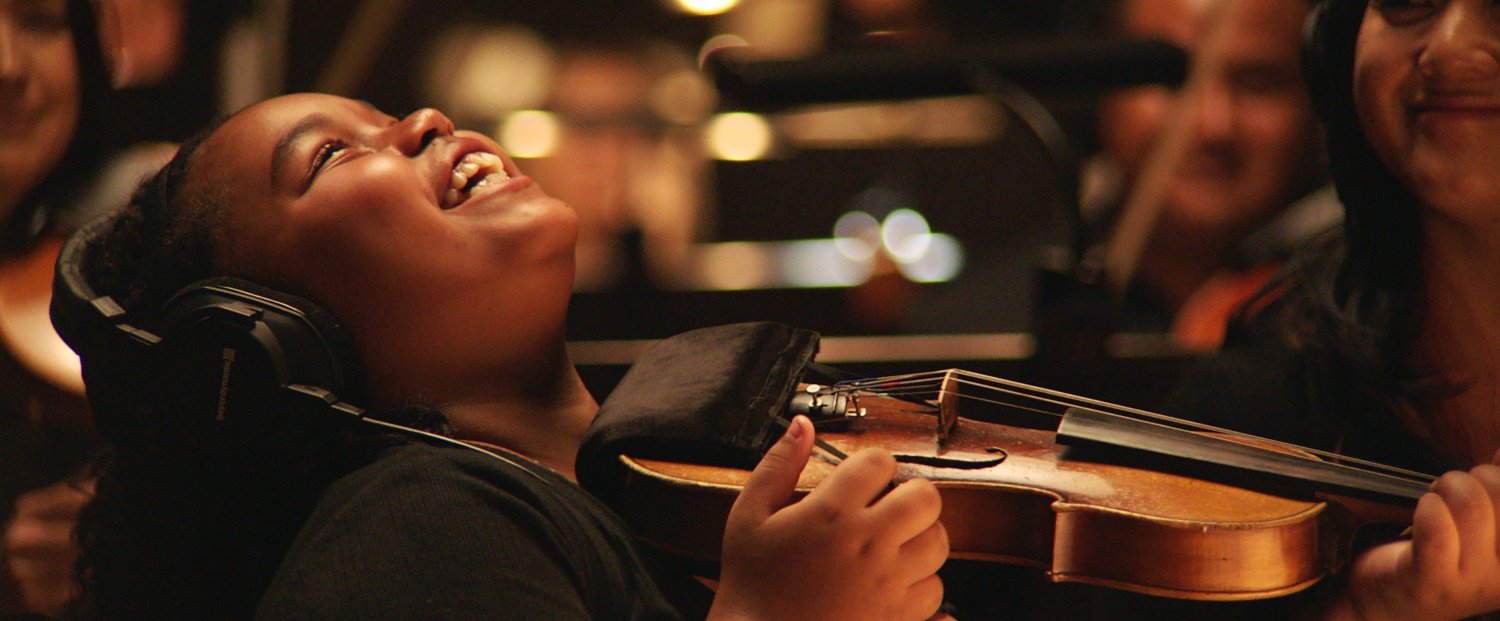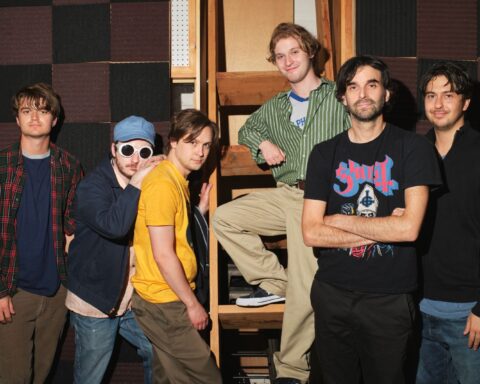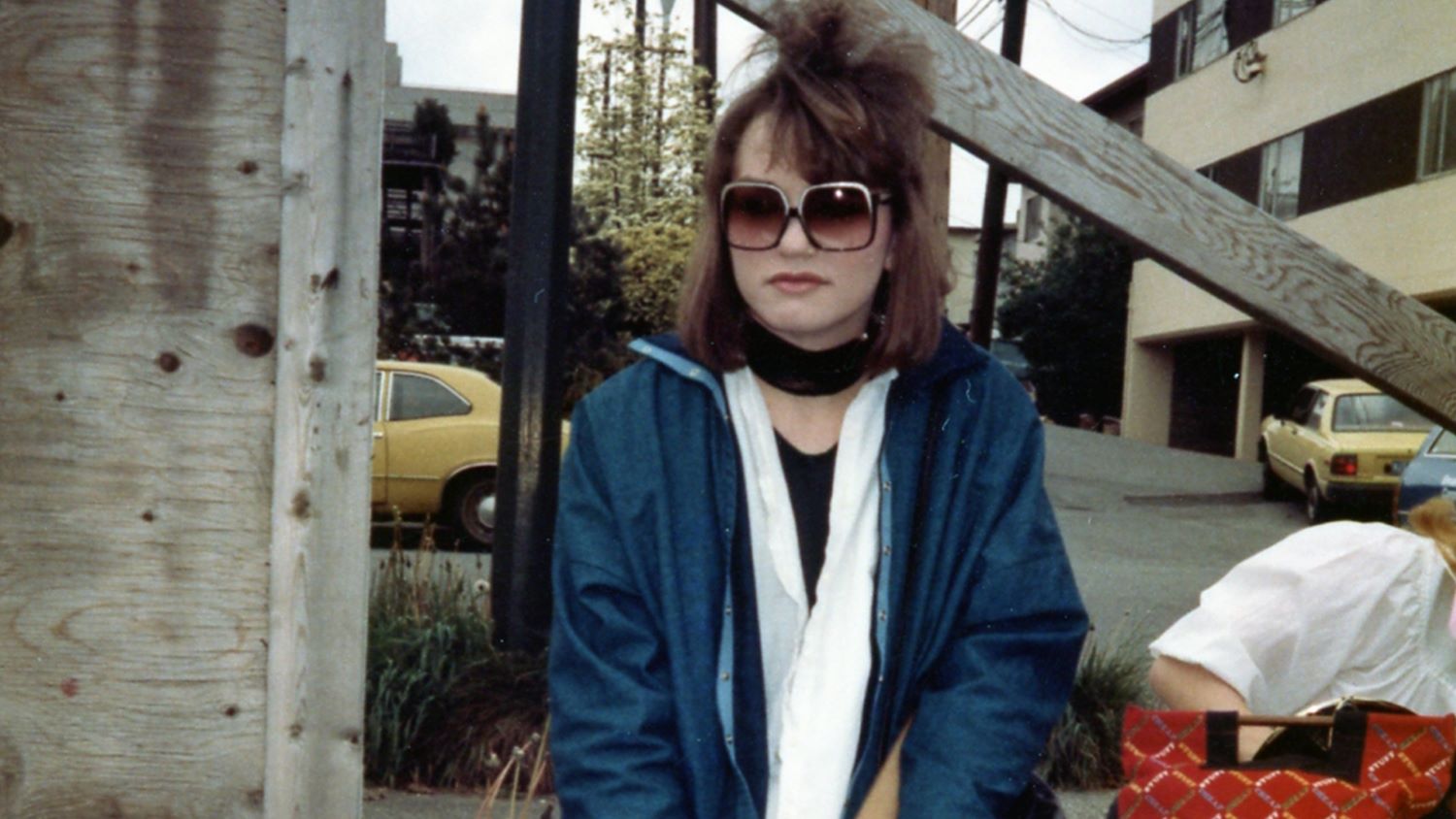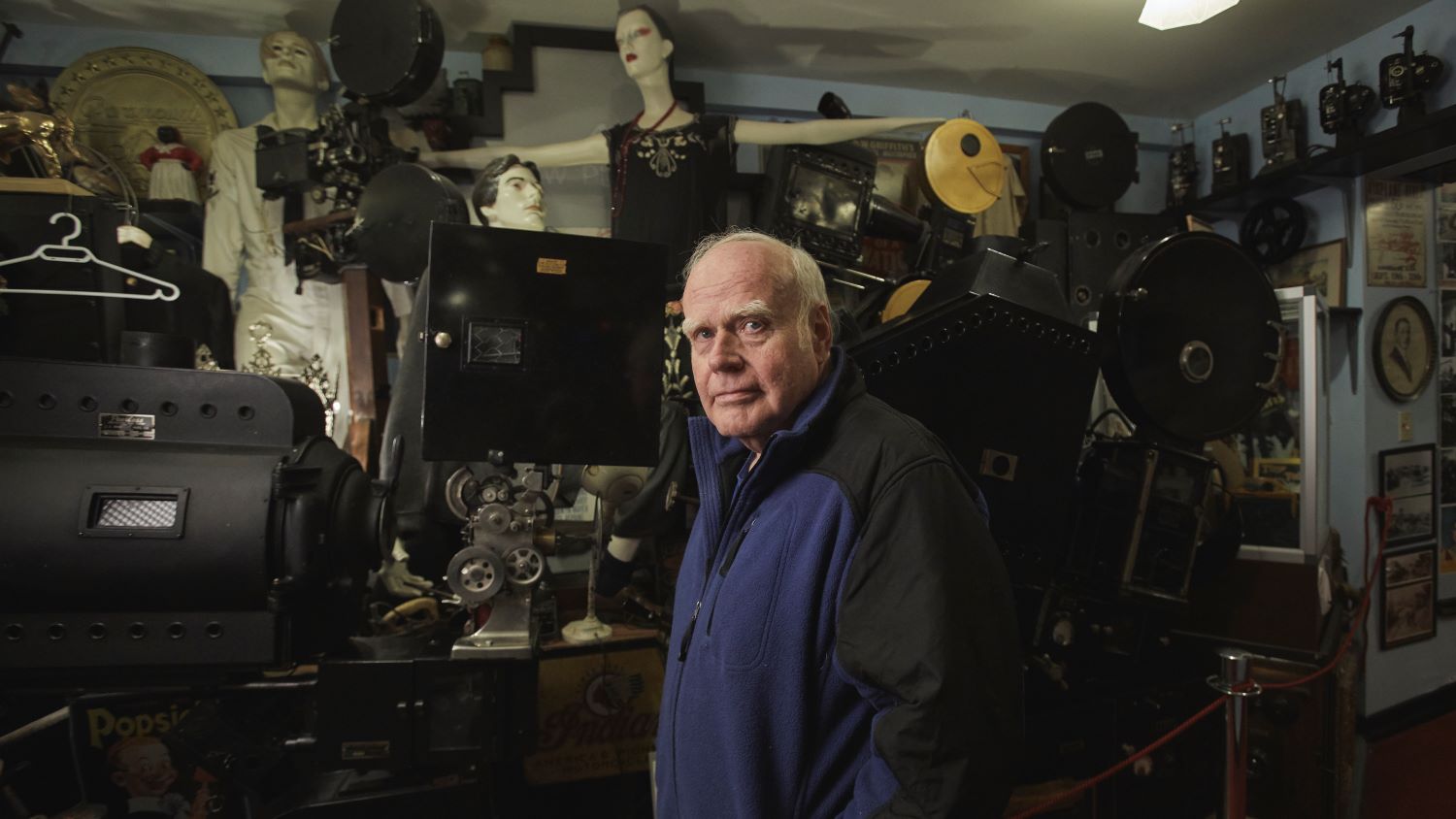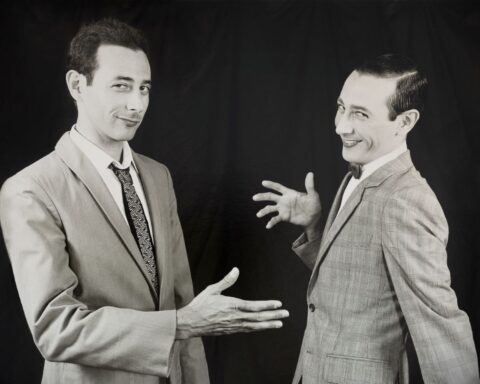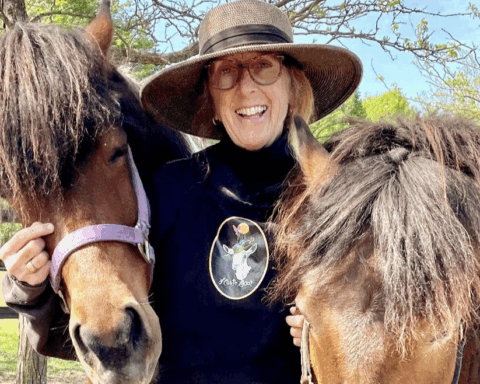Halifax native Ben Proudfoot won the Academy Award two years ago for the documentary short The Queen of Basketball. There’s a strong chance that he’ll win again this year for his acclaimed nominee The Last Repair Shop. The film, directed with Kris Bowers, tells a deeply moving account of the lives touched by a repair shop that fixes musical instruments for the Los Angeles Unified School District and makes them freely available for students. It’s a favourite for its portrait of lives transformed by music.
Proudfoot admits that the win on Oscar night remains a blur. “My dad was a lawyer and the closest thing I can compare it to is like a lawyer winning a case,” says Proudfoot, speaking with POV via telephone in the final hours of Oscar voting. “Our category is for the best film, so it’s not best director: It’s the best film and at the core of every film is the storyteller. In that case, it was Lucy Harris who had since passed away.” The Queen of Basketball features Harris in a candid laugh-filled interview as she reflects upon being the first woman to score a basket in the Olympics and being the only woman to be officially drafted in the NBA. Harris’s family was in the crowd when The Queen of Basketball won and cheered audibly when Proudfoot took the stage.
“To hear The Queen of Basketball named was incredibly cathartic for us as filmmakers for her family. Imagine your mom being ignored for decades and then suddenly her name is called from the world stage. It’s a pretty amazing moment.”
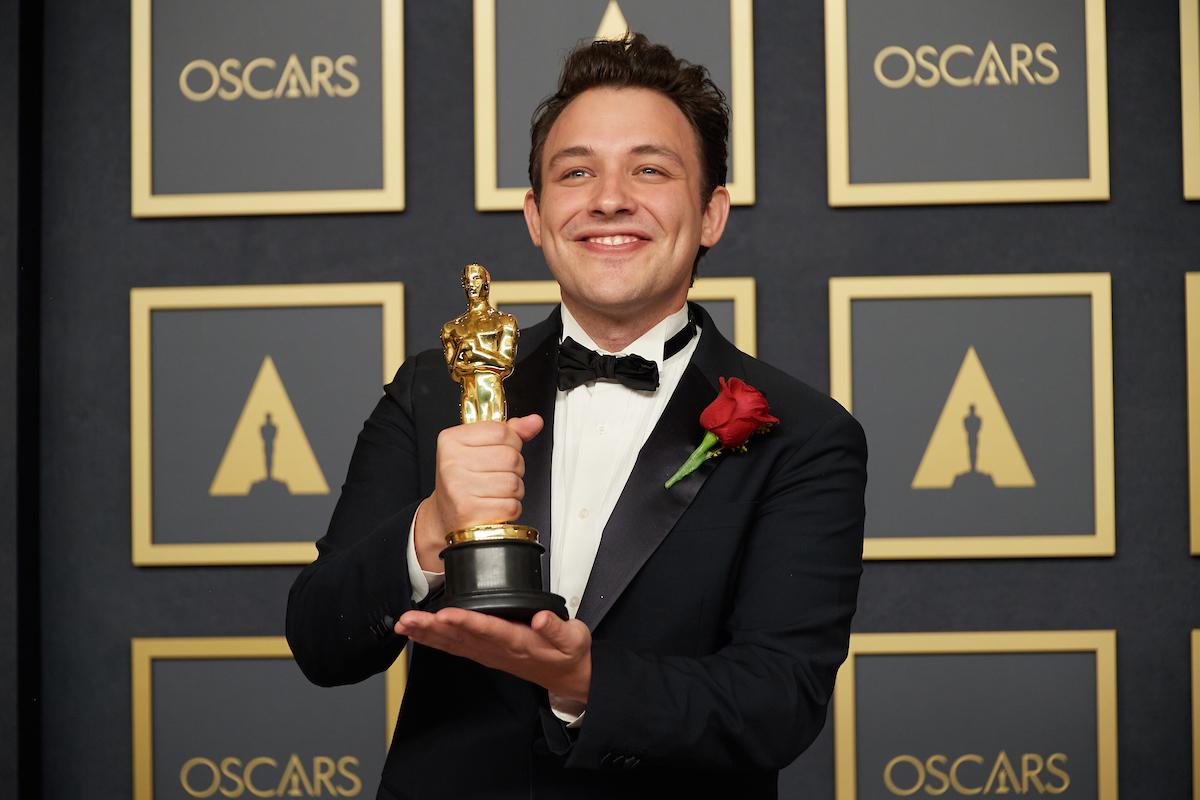
The Repair People
This time, Proudfoot’s nominated film tells the story of not one unsung hero, but several people who represent generations of music lovers. The Last Repair Shop features the stories of four employees who make the instruments sing anew. Manager and piano tuner Steve Bagmanyan tells of finding music after fleeing Azerbaijan, where his father was murdered and Armenians were targeted. Dana Atkinson in the strings department shares how music helped him find himself and gave him strength while creating a family with his husband. Woodwind wizard Duane Michaels provides an upbeat story about falling into music and landing an unexpected friendship with Elvis’s former wrangler “Colonel” Tom Parker. Finally, Paty Moreno handles brass instruments and gives The Last Repair Shop an emotional wallop with her account of coming from Mexico, raising her kids alone, and struggling to achieve the American dream.
“I’m looking for people who have great stories that maybe haven’t been told before or have been ignored or overlooked,” says Proudfoot. “It’s a great use of our art form, but it’s also helpful in disseminating the film. People want to share it in order to join the overall mission of giving this person the credit or attention that’s due. It’s great to align the mission of the storyteller and the filmmakers and the audience in the same direction, which is that the story ought to be told.”
When it comes to choosing the characters for The Last Repair Shop, though, Proudfoot says it was a good happenstance that Bagmanyan, Atkinson, Michaels, and Moreno formed the key cast. The director notes that employees at the repair shop were reluctant to participate after a news article ten years’ back inadvertently chided their work while noting a backlog of schools waiting for instruments due to funding issues at the shop. (Recent news that The Last Repair Shop inspired a $15 million endowment campaign for the shop means that the workers have little reason to worry about funding moving forward.)
Finding the Story
“They were skeptical of any outside storyteller coming in,” says Proudfoot. “I made my pitch, my big Jerry Maguire ‘Who’s with me?’ speech to the 12 people who work there. Four people raised their hands. Those are the four people in the movie.”
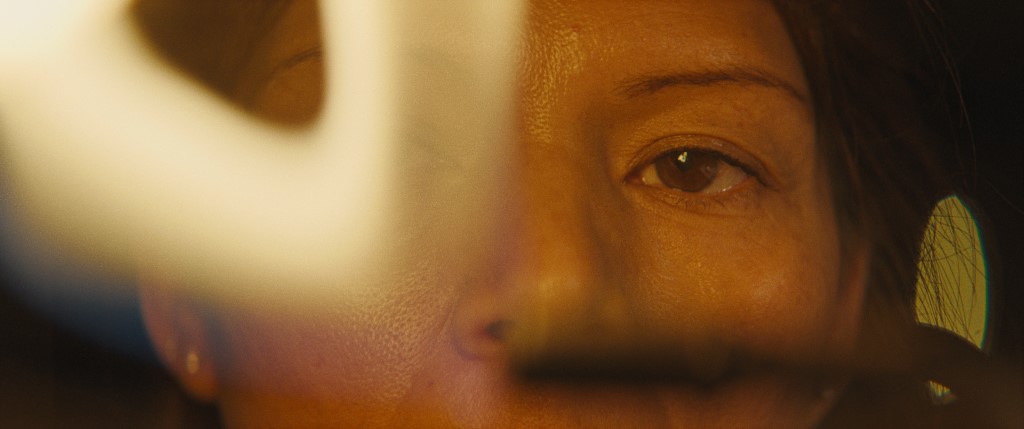
The great perspectives that make The Last Repair Shop one of the most moving docs one will ever see speak to the director’s rapport with interviewees. But they also exemplify a skill built over a body of work that favours interviews as the spine of a film. While Proudfoot notes that it’s something of a gift to go four for four with these characters, the film reveals a trait of the documentary process. “It underlines how everybody has a story,” observes Proudfoot.
“This was not an extensive casting research project,” he continues. “These are just the four people who decided that they wanted to tell their story. Dana was the first one I spoke to, and it became clear immediately to Kris and I that the overarching metaphor was of the physical instruments being repaired, but also that music could repair a person—that you could be broken and repair your life. As soon as that came forward, we were like, ‘That’s the movie.’ These people are heroes reminding us to approach everything in life as if it can be repaired.”
Learning from Morris
Part of what makes the interviews of The Last Repair Shop so compelling are the direct-address close-ups that let the interviewees speak from the heart. The model draws upon the great Errol Morris’s handiwork with the Interrotron—a contraption that allows a filmmaker to interview someone via a monitor while a camera meets them at eye-level. Proudfoot says he first encountered the set-up not through one of Morris’s acclaimed docs, but rather his IBM profile They Were There and its tightly framed interviews.
“It struck me as so much better than every other interview frame I’d seen,” notes Proudfoot. “I was frustrated by the ‘classic’ wide interview frame with the off-camera eyeline and seeing all kinds of information about the room around them, like what their knee caps look like. Oftentimes, the camera is staring right into someone’s crotch,” he laughs.
Proudfoot says that leaning into the Morris playbook adds “valuable emotional information” to the interviews, which is essential when telling someone’s story in an accessible and compelling way. “As I made more and more films, I got closer and closer and built my own Interrotron. You can’t buy them. You’ve got build it out of teleprompter parts to do it correctly,” he explains. “Once I built that, I found what I was going for: trying to erase the filmmaker and create a direct relationship between the storyteller and the audience, which is what that tool does so well.”
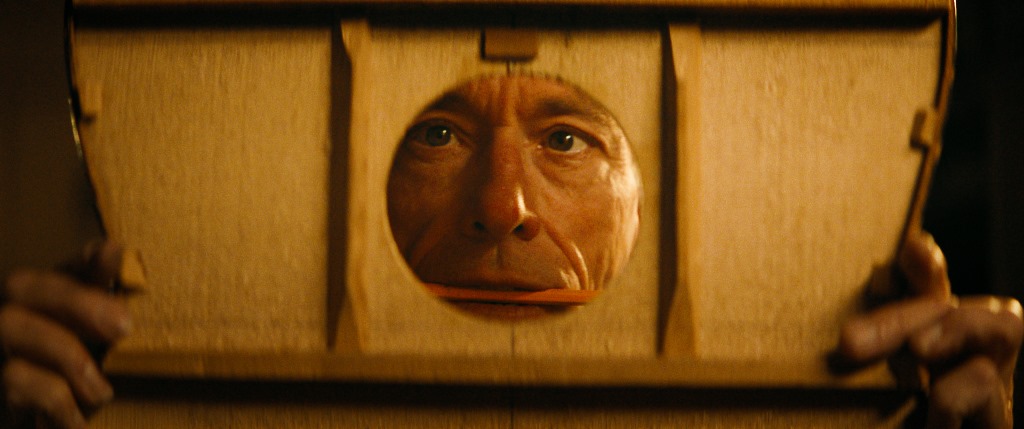
Distilling an Ensemble
While films like The Queen of Basketball, Mink!, or Proudfoot’s previous collaboration with Bowers, the Oscar-nominated A Concerto Is a Conversation, draw from a core character or duo, the director admits that it was a different beast tackling the eight characters. Besides the four repair people, the film includes interviews with students Porche (9), Manuel (18), Ismerai (15), Amanda (17).
“Working with another Canadian, Lucas Dong who edited Concerto, we were basically telling two stories [in Concerto]: Kris and his grandfather. With this film, there’s eight primary characters, so it was a huge challenge,” says Proudfoot. “One of the people to celebrate is Nick Wright, who edited The Last Repair Shop, because it’s very difficult to tell an emotional story in five minutes, and in some cases, a minute.” The young students generally get about 60 seconds to convey the impact that the repair shop’s instruments have on their lives. Proudfoot says that distilling eight stories into 39 minutes was the film’s biggest challenge.
The director credits that to a decade of tackling character-driven stories at Breakwater Studios, his LA-based production company. “We’ve been honing our ability to tell complex emotional stories succinctly.” But when The Last Repair Shop hits its crescendo with an orchestral performance by generations of musicians who honed their craft with instruments from the shop, the recognizable faces illustrate that these eight stories are part of a collective story.
“Kris comes from a music background and he started talking about these segments as movements,” adds Proudfoot. “The movie takes on a musical form with interstitials of the kids’ perspectives leading up to this grand finale. We started thinking about it like that and structuring the order of them that way. Kris was a virtuoso.”

Music and Magic
The director adds that while Bowers honed his skills as a musician early—coincidentally, Bagmanyan tuned pianos on which the composer/filmmaker learned to play—he came to non-fiction through an unexpected route: as a magician. Proudfoot explains that he was a magician as a teenager, which initially brought him to Los Angeles before becoming a filmmaker, and he drew upon that experience while Bowers leaned into his musical chops.
“Oftentimes in magic, you open with something dazzling or eye-popping, and then you move into something impossible, like a magic trick that people really can’t figure out, and then you end with something beautiful or funny. That structure intermingled with Kris’s idea of how he would structure a 40-minute symphony,” explains Proudfoot. “We talked about all those things in terms of the emotional landscape of peaks and valleys and how we would build it to draw in the audience.”
The design clearly works with The Last Repair Shop inspiring arthouse distributor Searchlight Pictures to make a rare short doc acquisition for a library that includes Oscar winners like Summer of Soul and Nomadland. “Kris and I self-funded this project for four years and submitted it to Telluride and it got in. It was only then that we started talking to the Searchlight folks,” Proudfoot explains. He notes that the film found a champion in Searchlight’s David Greenbaum. With Searchlight’s help, The Last Repair Shop streams on Disney+ and Hulu, but also freely on YouTube.
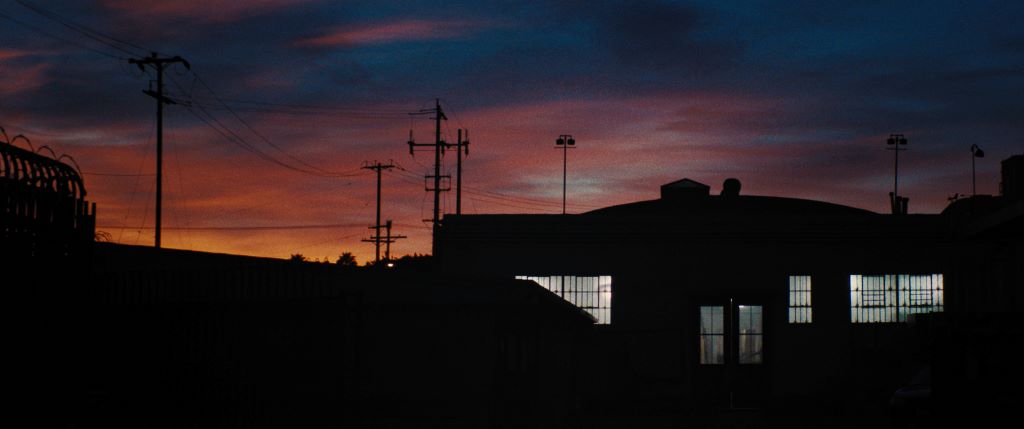
“Our goal was not a financial windfall as much as it was reaching as wide of an audience as possible,” adds Proudfoot. “We knew we wanted it to be on YouTube for free, and we said that to Searchlight, but we also wanted to have it on Disney+ and Hulu. They said, ‘Great. We want it to permeate the culture too.’ We knew we had the right partner.” The film also includes the Los Angeles Times among its distribution partners.
Disrupting the Market
Lining up these avenues for The Last Repair Shop offers Proudfoot a sense of optimism for shorts at a time when the doc market has people cautious. “Something I believe in wholeheartedly is that short films are not a stepping stone. They’re not a student format,” says Proudfoot. “It’s an art form in and of itself. If you’re serious about filmmaking, then you need to be serious about short filmmaking too.”
When asked about the shorts situation in Canada with a perspective from the U.S., Proudfoot says that there’s obviously no shortage of talent, nor lack of quality output with the NFB and CBC Short Docs leading the way, but that distribution remains the challenge for the most democratic of art forms. While metrics on YouTube, for example, indicates a healthy appetite for shorts, Proudfoot notes that the streamers’ emphasis on serials drives the current market demand that risks leaving shorts behind.
“We need to connect audience demand with filmmakers, and that will happen. But the reason why it hasn’t happened yet is because streaming platforms are measuring their success by how much time people are spending on their platform. And so the way to increase that number is to create work that never satisfies the audience and only draws them further and deeper,” says Proudfoot on the serials that keep audiences binge-watching.
“It’s always a business. If you want to be successful and disruptive in the film business, most of the opportunity exists in the short form.”




